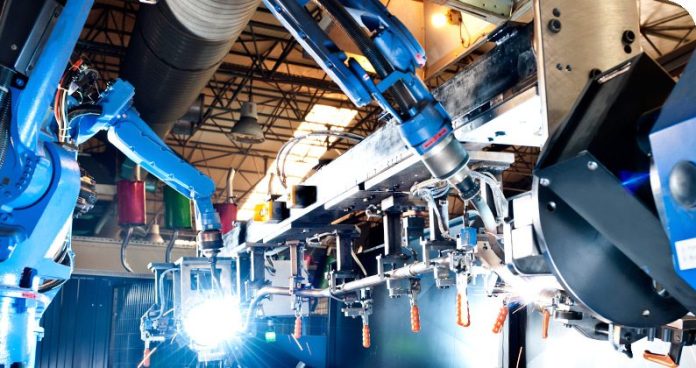Almost three quarters (73 per cent) of the total sales of industrial robots go to just five markets. Their identity (see below) is hardly surprising; they are the world’s leading nations for manufacturing.
What is notable from the new World Robotics Report, however, is the pace of China’s rising automation and intelligence on the production line. Its order volumes jumped a staggering 59 per cent in 2017, compared with 2015.
 Japan managed to increase order volumes by 18 per cent, but other leading manufacturing nations failed even to achieve double-digit growth. And China’s surging demand for robots comes on a bumper order already – more than a third (36 per cent) of all robots go to China, three times the proportion (12 per cent) that go to Japan, the second-placed country for robotics sales.
Japan managed to increase order volumes by 18 per cent, but other leading manufacturing nations failed even to achieve double-digit growth. And China’s surging demand for robots comes on a bumper order already – more than a third (36 per cent) of all robots go to China, three times the proportion (12 per cent) that go to Japan, the second-placed country for robotics sales.
Part of the reason for China’s high demand is sheer scale, of course, in terms of its population, manufacturing engine, and wider economy. It is also that other markets are better tuned, already. The average number of robots per 10,000 employees stands at 85, up from 74 in 2016. The average robot density is 106 units in Europe, 91 in the Americas, and just 75 units in Asia.
These last statistics are a little misleading. China’s density is actually 97, which is way higher than the Asian mean, and higher even than the global average. But, by comparison, the Republic of Korea (first) has 710 robots per 10,000 employees, Germany (third) has 322, Japan has 308, and the United States has 200.
 Here is the International Federation of Robotics’s profile of each of the leading nations for robotics, including the relative contributions of their own manufacturing sectors to the production of robotics equipment.
Here is the International Federation of Robotics’s profile of each of the leading nations for robotics, including the relative contributions of their own manufacturing sectors to the production of robotics equipment.
1 | CHINA
“China has significantly expanded its leading position with the strongest demand and a market share of 36 per cent of the total supply in 2017. With sales of about 138,000 industrial robots (up 59 per cent on 2016), China’s sales volume was higher than the total sales volume of Europe and the Americas combined (112,400 units).
“Foreign robot suppliers increased their sales by 72 per cent to 103,200 units, including robots produced locally by international robot suppliers in China. This is the first time that foreign robot suppliers have a higher growth rate than the local manufacturers. The market share of the Chinese robot suppliers decreased from 31 per cent in 2016 to 25 per cent in 2017.”
2 | JAPAN
“Japan’s manufacturers delivered 56 per cent of the global supply in 2017. This makes Japan the world’s number one industrial robot manufacturer. The export rate increased by 45 per cent (in 2017). North America, China, the Republic of Korea, and Europe were target export destinations. Robot sales in Japan increased by 18 per cent to 45,566 units, representing the second highest value ever witnessed for this country. A higher value was only recorded in the year 2000 with 46,986 units.”
3 | REPUBLIC OF KOREA
“The manufacturing industry of the Republic of Korea has by far the highest robot density in the world – more than eight times the global average amount. But in 2017, robot supplies decreased by four per cent to 39,732 units. The main driver of this development was the electronics industry, which reduced robot installations by 18 per cent in 2017. The year before, industrial robot installations peaked at 41,373 units.”
4 | UNITED STATES
“Robot installations in the United States continued to increase to a new peak in 2017 – for the seventh year in a row – and reached 33,192 units. This is six per cent higher than in 2016. Since 2010, the driver of the growth in all manufacturing industries in the US has been the ongoing trend to automate production in order to strengthen the US industries in both domestic and global markets.”
5 | GERMANY
“Germany is the fifth largest robot market in the world and number one in Europe. In 2017, the number of robots sold increased by seven per cent to 21,404 units – a new all-time record – compared to 20,074 units in 2016. Between 2014 and 2016, annual sales of industrial robots stagnated at around 20,000 units.”

